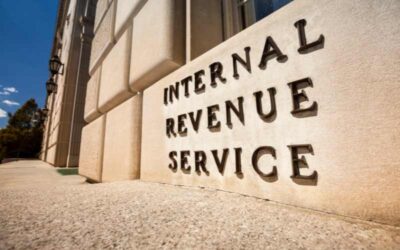Financial Statement Accounting and Reporting Requirements
Under the Paycheck Protection Program (PPP), the federal government authorizes up to $349 billion in forgivable loans to small businesses during the COVID-19 crisis. Small businesses are receiving loans, and many have questions on how to account for the funds, expenses, and forgiveness in their accounting records.
Currently, no guidance has been issued to specifically address the financial statement accounting and reporting requirements for a program like the PPP. There is some general guidance within the accounting standards issued by the Financial Accounting Standards Board that may be applied to this situation. Learn more below from frequently asked questions we hear from our clients:
How do I record the proceeds received from PPP?
The legal form of a PPP loan is a debt instrument. As a result, the proceeds should be presented as debt on the balance sheet, following Accounting Standards Codification (ASC) 470.
Is the PPP loan recorded as short-term or long-term debt?
In most cases, the balance should be treated as current debt versus long-term. The debt term should be evaluated on a case by case basis. For example, if a business is not expecting the full loan amount to be forgiven, it could be determined a portion of it would be presented as long-term.
How are costs incurred to obtain the loan treated?
Costs paid to third parties in conjunction with securing a PPP loan are amortized over the term of the debt. These costs could include document fees, closing costs, accounting, and legal fees. The CARES Act prohibits lenders explicitly from charging fees for the processing of PPP loans, and these amortizable costs are expected to be minimal.
Should interest be imputed or accrued?
Under ASC 470, an entity is required to accrue interest at the stated rate of the note, which for PPP is 1 percent. For purposes of the PPP program, principal and interest payments are deferred for six months. Interest accrues starting at the funding date. Interest is not required to be imputed to a market rate due to government agency transactions being specifically excluded in ASC 835-30.
Businesses maintaining their accounting records on the cash basis method of accounting are not required to accrue interest but expense the interest when paid.
When should the forgiveness be recognized?
An entity that has accounted for the PPP loan as debt should not recognize income from the extinguishment of its debt until the entity has been legally released as the primary obligor under the loan. For PPP loans, this condition is generally satisfied when all the loan forgiveness conditions have been met:
- The payroll/other qualified expenses have been incurred
- The forgiveness adjustments resulting from workforce and salary and wage reductions have been considered
- Complete documentation has been presented to the lender
- The entity receives confirmation from its lender and/or the SBA that the loan, or a portion thereof, has been forgiven
What will the forgiveness look like in the financial statements?
The income resulting from forgiveness will be measured based on the net carrying value of the PPP loan, which should include accrued interest (if forgiven) and unamortized financing costs relating to the forgivable portion of the loan. Within the income statement, this income is presented as a separate line item in the other income and expense section.
For cash flow statement purposes, the receipt of the PPP loan proceeds accounted for as debt would be presented as cash from financing activities. Any amounts repaid would be presented as cash outflows from financing activities, and any amounts forgiven would be disclosed as a noncash financing activity.
How do I record the expenses paid with the PPP loan proceeds?
The eligible expenses paid using PPP funds should continue to be accounted for in the traditional manner. Payroll, rent, utilities, and mortgage interest are shown in the income statement as usual when paid or accrued, depending on accounting method of the entity.
Will disclosure footnotes be required in my year-end financial statements?
It is expected additional guidance will be issued related to financial statement presentation and disclosures. To the extent that a PPP loan remains outstanding at a financial statement reporting period, particularly year-end, entities should consider disclosing uncertainties related to eligibility and complexity of the PPP loan forgiveness process.
How do I account for the tax consequences of PPP loan forgiveness?
Under current guidance, the forgiveness of the PPP loan will not impact an entity’s income tax expense:
- The CARES Act expressly excludes income arising from the forgiveness of the PPP loan from taxable income.
- The IRS’s position (as recently published in Notice 2020-32) disallows a deduction for the payment of expenses resulting in forgiveness of a PPP loan.
- As both these amounts are equal, they fully offset, and there is no net income tax expense or benefit.
- If the IRS position of non-deductibility is reversed (which requires future congressional action) the result would be different:
- The extinguishment of debt income would be a permanent difference, as it would never be taxable. Therefore, no related income tax expense.
- The expenses incurred would provide a reduction in income tax liability. Therefore, there would be an income tax benefit at the appropriate statutory income tax rate.
Are there other options for reporting the PPP proceeds?
An entity may take an alternate approach to accounting for a PPP loan and elect to treat the forgivable PPP loan as a government grant. This results in recording the proceeds as grant income on the income statement as qualifying PPP expenses are incurred.
This method is anticipated to apply for nonprofit entities. We do not recommend or believe this approach will be widely used given the degree of uncertainty and complexity surrounding the PPP loan forgiveness process. Detailed financial statement disclosures are recommended with this method as well.
QUESTIONS REGARDING ACCOUNTING FOR PPP LOANS AND FORGIVENESS?
To learn more, visit the COVID-19 Resource section of our website or contact us at [email protected].



